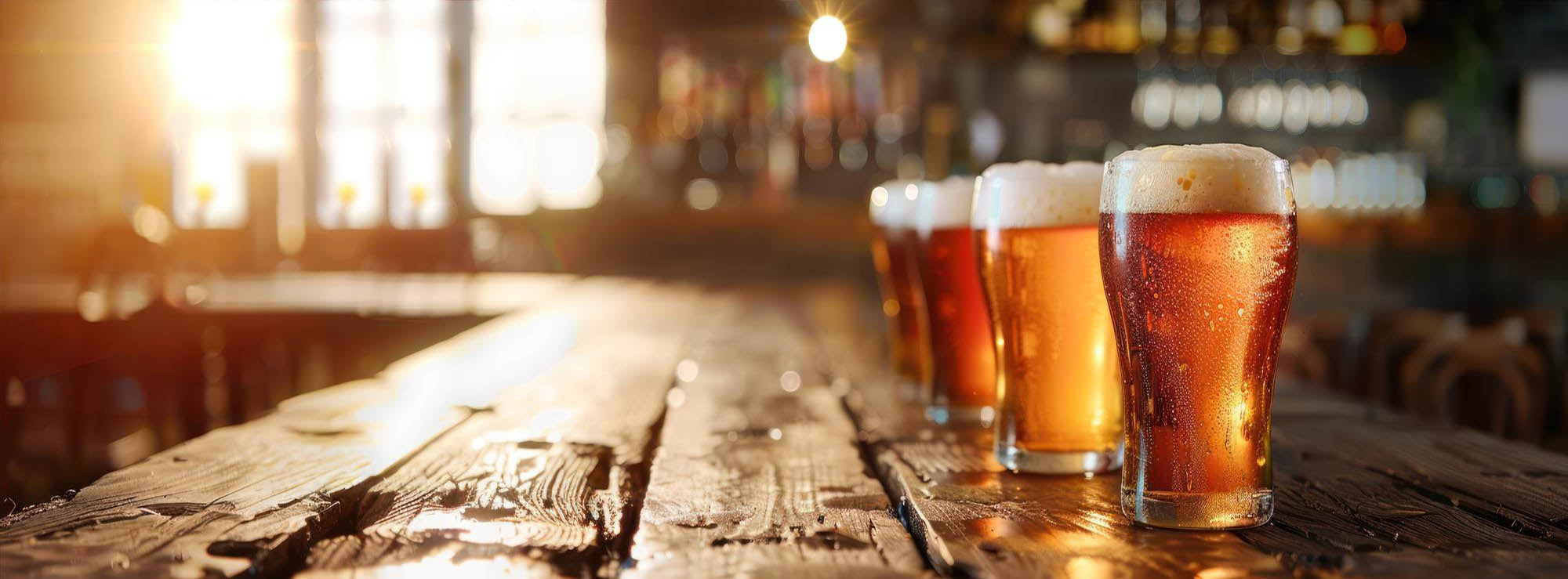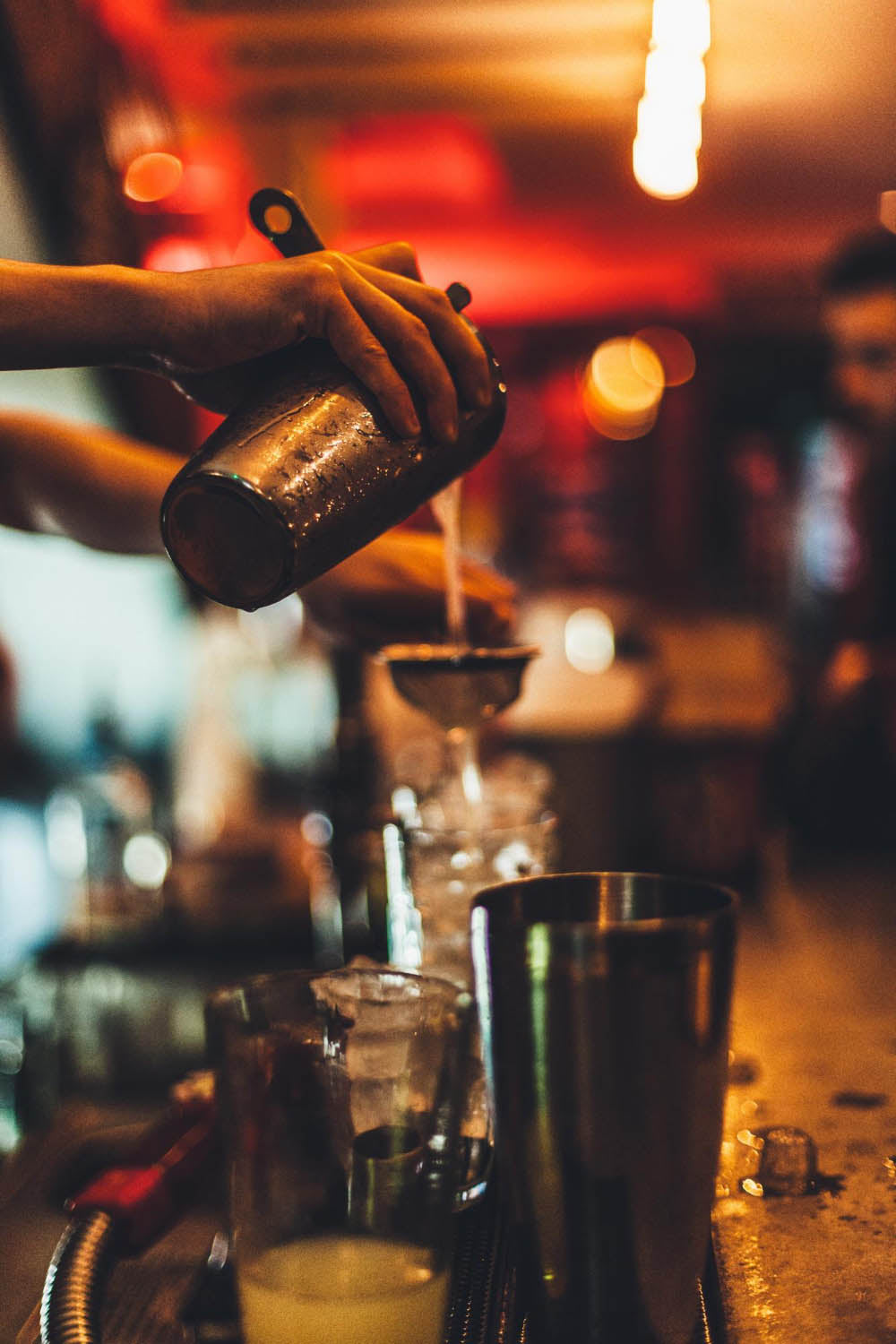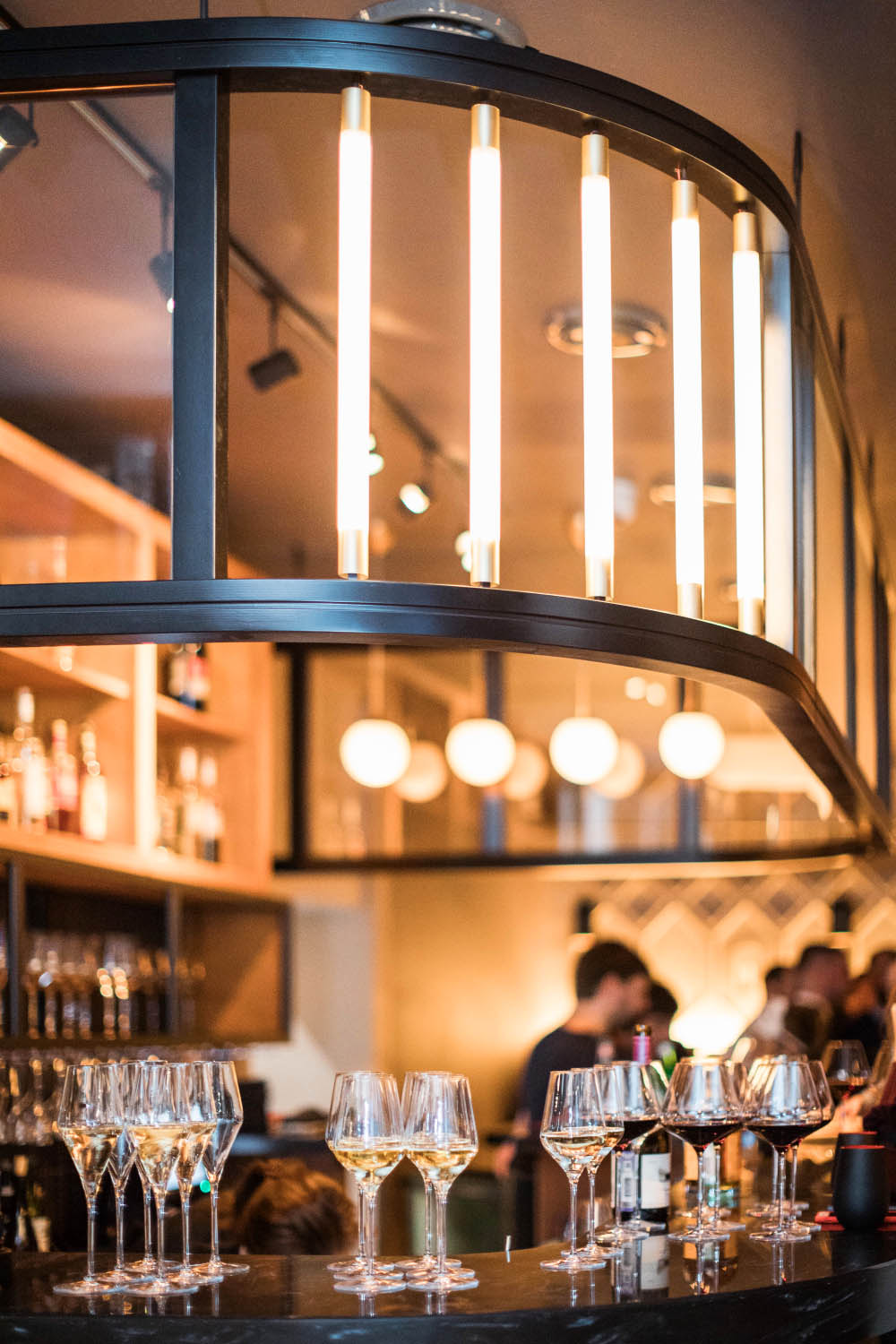
Bar & Pub Health and Safety Templates & Guidance
Pre-filled, editable health and safety templates for bars, pubs and licensed venues — including risk assessments, policies, fire safety templates, COSHH documents, and more to keep your business safe, professional, and compliant.

Keep your bar, pub, or licensed premises safe and compliant with our easy-to-use health and safety templates.
Simplify health and safety management in your bar, pub, or licensed venue with our industry-specific templates. Whether you run a busy city centre bar, a traditional local pub, a cocktail lounge, or any other type of licensed premises, our editable templates help you stay compliant with regulations while protecting staff, customers, and contractors from everyday risks in fast-paced hospitality environments.
Many templates come pre-filled with detailed, bar and pub–specific content — including risk assessments, health and safety policies, fire safety forms, COSHH documents, accident reports, staff safety guidance, and more. This makes completion quick, accurate, and stress-free. With our ready-to-use tools, you can focus on serving customers, managing your venue efficiently, and maintaining a welcoming atmosphere — all while meeting your health and safety responsibilities with confidence.

Safety First: The Key Ingredient in Successful Pubs and Bars
The clink of glasses, the hum of conversation, and the lively atmosphere – all classic scenes in bars and pubs. However, behind the scenes, one crucial factor determines the success and reputation of these establishments: health and safety.
Protection from Health Hazards
With the serving of alcohol and bar snacks at its core, the industry faces potential hygiene and safety risks. Proper storage, handling, and cleanliness help prevent contamination and ensure customer well-being, safeguarding both your patrons and your pub’s reputation.
Employee Safety
Bars and pubs are filled with potential hazards – broken glass, wet floors, open flames, and heavy kegs. Clear safety procedures and staff training are essential to preventing accidents and injuries, ensuring a secure and productive work environment.
Building Trust with Patrons
The cleanliness and safety standards of a bar or pub play a key role in customer loyalty. When patrons see that a venue prioritises health, hygiene, and safety, it builds trust, encourages repeat visits, and generates positive word-of-mouth recommendations.
Legal and Financial Implications
Failing to comply with health and safety regulations can lead to fines, legal action, or even closure. Keeping up to date with licensing laws, fire safety requirements, and hygiene regulations is essential to protect your business and ensure compliance.
Positive Work Environment
A strong safety culture creates a more positive work environment. When staff know that their well-being is a priority, morale improves, staff retention increases, and teamwork strengthens, ultimately benefiting service quality and customer experience.
In Summary...
Health and safety in the bar and pub industry isn’t just a checklist—it’s an ongoing commitment. By prioritising hygiene, fire safety, employee training, and risk management, bars and pubs can protect their staff, customers, and reputation, securing long-term success in a highly competitive industry.
Top 3 Health and Safety Hazards in Bars & Pubs:
-

Slips, Trips, and Falls
View ProductsSpilled drinks, wet floors, and uneven surfaces make slips, trips, and falls one of the most common hazards in bars and pubs. Ensuring prompt spill clean-ups, non-slip flooring, and clear walkways helps to minimise the risk of injury for both staff and customers.
-

Fire Hazards
View ProductsWith open flames, electrical equipment, and flammable alcohol products, fire safety is a critical concern in bars and pubs. Regular fire risk assessments, properly maintained fire extinguishers, clear escape routes, and staff training are essential to prevent and respond to fire-related emergencies.
-

Alcohol-Related Incidents
View ProductsOverconsumption of alcohol can lead to aggressive behaviour, accidents, or medical emergencies. Staff should be trained in responsible alcohol service, know how to handle intoxicated customers, and have security measures in place to prevent disturbances and ensure customer safety.

Why pay expensive consultant fees when you can manage health and safety yourself?
Improve your compliance while saving time and money by creating health and safety documents, customised to your business, yourself. Our health and safety range for pubs, bars, and licensed venues covers a suite of essential templates including health and safety policies, risk assessments, COSHH forms, fire safety documents, health and safety guidance, safety posters and more.
Benefits of managing health and safety yourself...
-

Improve safety
Health and safety at work is about preventing accidents, incidents and ill-health by assessing the work environment, the activities within it, and taking appropriate action.
-

Ensure compliance
Our ready to use templates, many of which are pre-filled, will enable you to quickly increase your compliance to health and safety laws and regulations.
-

Save money
With health and safety consultants often charging upwards of £400 per day, there is a better way. Take control and save yourself time and money.

Compliance Solutions for Bars, Pubs & Licensed Venues
For many small bar, pub, or licensed premises owners, health and safety compliance can feel like an overwhelming challenge. Managing a busy venue with a limited budget and tight schedule, these entrepreneurs often struggle to dedicate the necessary time and financial resources to fully address health and safety requirements.
While the commitment to maintaining a safe drinking environment is there, the practicalities—such as staff training, fire safety measures, equipment maintenance, and hygiene management—can be demanding. This sometimes leads to shortcuts, increasing the risk of accidents, legal penalties, and reputational damage.
It’s a delicate balancing act, but one that highlights the critical importance of health and safety, even in the smallest of pubs and bars.
At easyhealthandsafety, we simplify health and safety for bars, pubs, and licensed venues with ready-to-use templates and straightforward guidance documents, making compliance quick, stress-free and cost effective.
Frequently Asked Questions
Bar and Pub Health and Safety FAQs
How can I create a risk assessment for my bar, pub, or licensed venue?
To create a bar or pub risk assessment, identify hazards, evaluate risks, record your findings, and implement control measures that meet health and safety regulations.
Creating a risk assessment for a bar, pub, or licensed premises involves five main steps:
- Identify hazards such as hot surfaces, spillages, sharp objects, alcohol service, or crowd control.
- Decide who could be harmed and how, including bar staff, kitchen teams, cleaners, contractors, and customers.
- Evaluate the risks and determine appropriate control measures to reduce them, such as training, signage, or PPE.
- Record your findings — this is a legal requirement if you employ five or more people.
- Review and update regularly, especially when equipment, staff, or activities change.
Using a professionally written template can save time and ensure nothing important is missed. Our editable Bar and Pub Risk Assessment Template is specifically designed for the drinks hospitality sector and comes pre-filled with relevant content, helping you stay compliant with the Health and Safety Executive (HSE) guidelines.
For a complete solution, the Bar and Pub Health and Safety Template Bundle contains a suite of essential documents including risk assessments, health and safety policies, fire safety, COSHH, accident reports, staff safety guidance, and more tailored for licensed premises, giving you a ready-to-use compliance toolkit.
What are the key health and safety regulations for bars and pubs?
Bars and pubs must comply with food hygiene laws, fire safety regulations, alcohol licensing laws, and workplace health and safety requirements. This includes carrying out risk assessments, ensuring fire precautions are in place, maintaining hygiene standards, and providing staff training to create a safe environment for employees and customers.
Find our Bar and Pub Health and Safety Template Bundle here.
Do bars, pubs, and licensed premises need to complete a risk assessment?
Yes, all bars, pubs, and licensed premises are legally required to complete a risk assessment under health and safety law to protect staff, customers, and contractors.
Every bar, pub, or licensed venue must carry out a health and safety risk assessment in line with the Management of Health and Safety at Work Regulations 1999. This legal requirement ensures that potential hazards — such as slips and trips, fire risks, alcohol-related violence, food hygiene, and manual handling — are properly identified, evaluated, and controlled.
The assessment should be written down if you employ five or more people and regularly reviewed to stay compliant with the Health and Safety at Work etc. Act 1974. Failing to complete or update a risk assessment can lead to enforcement action, fines, or even closure of your business. To simplify this process, you can use our ready-made Bar and Pub Risk Assessment Template, which includes the key hazards and controls commonly found in licensed premises.
To ensure compliance, use our Bar and Pub Health and Safety Template Bundle, which includes a suite of essential documents to help you manage safety across your business.
Do I need to provide health and safety training for my staff?
A bar or pub risk assessment should cover fire safety, slips and trips, manual handling, alcohol service, first aid, sharp equipment, and hygiene risks. Regularly reviewing and updating risk assessments ensures potential hazards are identified and managed effectively.
In addition to this, you may need to consider other compliance training i.e. food hygiene training, among other things.
How can I prevent slips, trips, and falls in my bar or pub?
To reduce the risk of slips, trips, and falls, keep floors dry and clear of hazards, use non-slip mats, ensure walkways are free from clutter, and provide good lighting. Train staff to clean up spills immediately and wear suitable footwear to minimise accidents.
What fire safety measures should a bar or pub have in place?
Every bar or pub must have a fire risk assessment, fire extinguishers, smoke alarms, and clear emergency exit routes. Electrical appliances should be regularly tested, and all staff must be trained in fire evacuation procedures.
Find our Fire Risk Assessment Template here.
What hygiene and food safety rules apply to pubs and bars?
Pubs and bars serving food or snacks must follow food hygiene regulations, including correct food storage, allergen labelling, pest control, and thorough cleaning procedures. Staff handling food must be trained in food hygiene to prevent contamination and ensure safe food preparation. These can all be assessed during a risk assessment.
How can I maintain a safe and compliant pub or bar?
Regular health and safety audits, staff training, and up-to-date risk assessments are essential for maintaining a safe and legally compliant bar or pub. Keeping up with changing regulations, ensuring cleanliness and maintenance, and fostering a strong safety culture will help protect your business, staff, and customers.
By following these health and safety best practices, bar and pub owners can ensure their establishment is safe, compliant, and welcoming for all.
Find our Bar and Pub Health and Safety Template Bundle here.
What first aid requirements does my bar or pub need to meet?
All bars and pubs must have a first aid kit on-site, and at least one staff member should be trained in basic first aid. Staff should know how to respond to alcohol-related incidents, cuts, burns, or falls. Clear procedures should be in place to record and report accidents.
Find our Bar and Pub Health and Safety Template Bundle here.
How can I protect staff from manual handling injuries?
Lifting heavy kegs, crates, and stock can cause back and muscle injuries. Staff should be trained in safe manual handling techniques and provided with trolleys or lifting aids to reduce strain. Regular breaks should also be encouraged to avoid fatigue-related injuries. These measures can all be assessed during a risk assessment.







